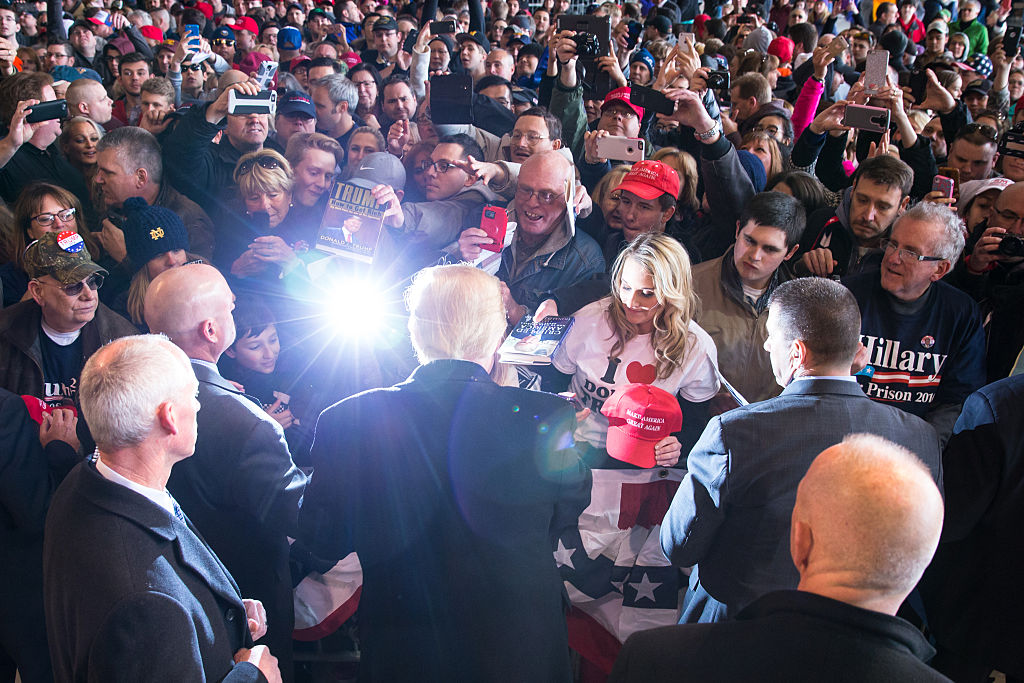
In the past two months, 20,000 people gathered in Oakland, Calif., to watch Sen. Kamala Harris announce her presidential campaign; a few hundred withstood wintry conditions to see Sen. Amy Klobuchar launch hers; and thousands more flocked to a historic mill site in Lawrence, Mass., to attend Sen. Elizabeth Warren’s.
Nothing dire happened at these rollouts, but that doesn’t mean people should be carefree while attending large political demonstrations.
On Feb. 15, a Coast Guard lieutenant was arrested on gun and drug charges after federal law enforcement officials seized guns and ammunition from his basement apartment just outside of Washington, D.C. Prosecutors say it appears 49-year-old Christopher P. Hasson was planning to kill 2020 candidates Sens. Harris, Warren, Kirsten Gillibrand and Cory Booker, as well as other prominent Democrats and television journalists. “The defendant intends to murder innocent civilians on a scale rarely seen in this country,” the government wrote in court filings this week.
It is not yet known when or where Hasson, a self-described white nationalist, would have allegedly tried to carry out his plots. What is known is that hundreds of political rallies, hosted by candidates, their congressional colleagues and celebrities will take place in the next year and a half.
Todd Madison, who served with the U. S. Secret Service as special agent in charge of protecting 2016 presidential candidate Hillary Clinton, and earlier in his career served as deputy agent in charge of former President Bill Clinton’s protective division, said people who hope to attend these events can never be too cautious.
Madison, now an associate managing director at corporate investigations firm K2 Intelligence, told TIME that people should assess online chatrooms and social media sites before going to events to see whether they are attracting excessive vitriol. Knowing that a certain extremist group is planning on protesting something you want to attend should potentially make you question your decision to attend, he said.
“Security professionals view cyber threats as part of their ongoing security assessments before and during an event because they can change so quickly,” Madison said. “It’s about weighing the risks against the benefits and understanding ahead of time what you are getting yourself into.”
The internet has drastically changed how Secret Service officials prepare for events. And it should change how event organizers in different industries prepare for large gatherings, too.
“Evolution in technology has created a new physical risk — not only does the ground need to be secured, but we now must consider what is coming from above in the form of drones,” Madison said. “Tactics that Secret Service agents take to ensure that these types of technologies do not cause a security disruption for politicians can be applied to any physical event or scenario.”
Threat levels can also vary by location, according to Madison.
“Risks and threats will shift as a candidate travels around the country and attends different events, so each location needs its own security plan and those plans need to adjust as the environment changes. Consider the local rhetoric and political outlook and whether it is negative, positive or neutral toward a candidate,” he said. “How does negative rhetoric impact the candidate and how will the security plan address it in a way that allows the candidate to continue with their planned event or activity? In this context, culture can impact how people express themselves and you have to have a keen understanding of what constitutes a local cultural norm or an actual threat and balance these sometimes conflicting expressions.”
Those shifting and evolving threat levels have given rise to some of today’s commonly-used security measures across the country.
“Many of the industry standard security measures now being adopted by event organizers, banks and even religious venues — like road blocks to keep cars from driving into pedestrian zones — were initially developed by the Secret Service,” Madison said. “As the threat landscape evolves, large scale event organizers should take cues from how Secret Service agents evaluate and address vulnerabilities, both physical and digital.”
But while security personnel spend long hours preparing to keep prominent politicians and members of the public safe, that doesn’t mean everyday civilians should not be looking out for risks too.
“The public has played a vital role in reporting suspicious activity or calling in tips so law enforcement officials stay alert and up-to-date on the vulnerabilities and can neutralize the threats,” Madison said.
As the saying goes: see something, say something.
More Must-Reads from TIME
- Cybersecurity Experts Are Sounding the Alarm on DOGE
- Meet the 2025 Women of the Year
- The Harsh Truth About Disability Inclusion
- Why Do More Young Adults Have Cancer?
- Colman Domingo Leads With Radical Love
- How to Get Better at Doing Things Alone
- Michelle Zauner Stares Down the Darkness
Write to Abby Vesoulis at abby.vesoulis@time.com
